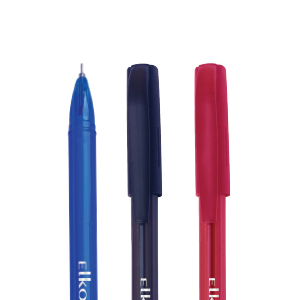Writing is an integral part of our lives, whether jotting down notes, crafting letters, or expressing creativity through art. The age-old debate of ballpoint pens versus gel pens continues to captivate pen enthusiasts and novices alike. In this comprehensive article, we will delve into the unique characteristics of both ballpoint and gel pens, comparing their performance, ink quality, ergonomic features, and versatility to determine which pen emerges as the ultimate writing tool.
I. Understanding the Ballpoint Pen:
A ballpoint pen is one of the most widely used writing instruments in the world, known for its reliability, affordability, and widespread availability. The primary component of a ballpoint pen is a tiny ball at the tip of the pen that rotates as it glides across the paper, dispensing oil-based ink onto the surface. This mechanism contributes to its consistent ink flow and non-smudging properties, making it ideal for everyday writing tasks.
Ink Quality and Durability:
Ballpoint pens employ oil-based ink, which dries quickly, resulting in minimal smudging. This feature makes them suitable for left-handed writers, as the ink is less likely to smudge when the hand moves across the page. Additionally, ballpoint pen ink tends to last longer than gel ink, making them an excellent choice for long-term use and archival purposes.
Cost-Effectiveness:
One of the key advantages of ballpoint pens is their affordability. They are available in bulk at low prices, making them an economical option for everyday writing needs, school supplies, and office use.
Penetration on Various Surfaces:
Ballpoint pens’ oil-based ink allows them to write on a wide range of surfaces, including glossy paper, carbon copies, and receipts, where gel pens might struggle.
II. Unveiling the Gel Pen:
Gel pens, introduced more recently, have gained immense popularity for their vibrant colors, smooth writing experience, and versatility. Unlike ballpoint pens, gel pens use water-based ink infused with pigments, creating a denser, more saturated color effect.
Writing Experience and Smoothness:
Gel pens glide effortlessly across the paper due to their lower viscosity ink, providing a smoother writing experience compared to ballpoint pens. The reduction in friction minimizes hand fatigue, making gel pens a preferred choice for prolonged writing sessions.
Color Variety and Creativity:
Gel pen come in an array of vivid colors, adding a touch of creativity to writing, note-taking, and art projects. This diverse color palette appeals to artists, students, and creative enthusiasts, allowing them to express themselves with flair.
Performance on Specialty Paper:
Gel pens perform exceptionally well on porous and textured paper, enhancing the overall writing experience on surfaces where ballpoint pens might struggle to deliver consistent results.
III. Ergonomics and Comfort:
Both ballpoint and gel pens come in various shapes and sizes, catering to individual preferences and ergonomic needs. The grip design plays a crucial role in the comfort of the writer during extended use.
Ballpoint Pen Grips:
Traditional ballpoint pens often have slim, cylindrical grips, which some users find comfortable due to their familiarity and simplicity. However, others might experience discomfort or hand cramping during extended writing sessions.
Gel Pen Grips:
Gel pens frequently feature rubberized or contoured grips, providing superior comfort and control for the writer. These grips reduce strain and improve the overall writing experience.
IV. Versatility and Specialized Use:
Both ballpoint and gel pens are available in a variety of point sizes, making them versatile for different writing styles and preferences.
Ballpoint Pen Point Sizes:
Ballpoint pens are typically available in fine, medium, and bold point sizes. The fine points are suitable for precise writing, while bold points are ideal for bold signatures and emphasized text.
Gel Pen Point Sizes:
Gel pens offer even more versatility, with ultra-fine, fine, medium, and bold point options. This wide range of choices accommodates various tasks, from detailed drawing to smooth and expressive writing.
V. Environmental Considerations:
As the world grows more environmentally conscious, consumers seek pens that minimize waste and environmental impact.
Ballpoint Pen Environmental Impact:
The longevity of ballpoint pen ink cartridges reduces the frequency of replacements, making them relatively eco-friendly. However, the abundance of plastic components can contribute to environmental issues if not disposed of properly.
Gel Pen Environmental Impact:
Gel pens often feature plastic casings and are generally not refillable, leading to more waste compared to traditional ballpoint pens. However, some brands have started offering refillable gel pens, reducing their environmental footprint.
In the battle between ballpoint and gel pens, there is no definitive winner, as each serves distinct purposes and appeals to different preferences. Ballpoint pens excel in durability, affordability, and performance on a variety of surfaces. On the other hand, gel pens shine with their smooth writing experience, vibrant colors, and creativity-inducing properties.
Choosing between the two ultimately depends on individual needs and writing habits. For everyday tasks, ballpoint pens remain a reliable and cost-effective option. However, if creativity, comfort, and a splash of color are desired, gel pens emerge as the go-to choice.
Ultimately, both pens have earned their place in the world of writing, offering users the power to express themselves and leave their mark on the page. The choice between ballpoint and gel pen becomes a personal journey of discovering one’s writing preferences and the pleasure of finding the perfect pen that suits their style.



